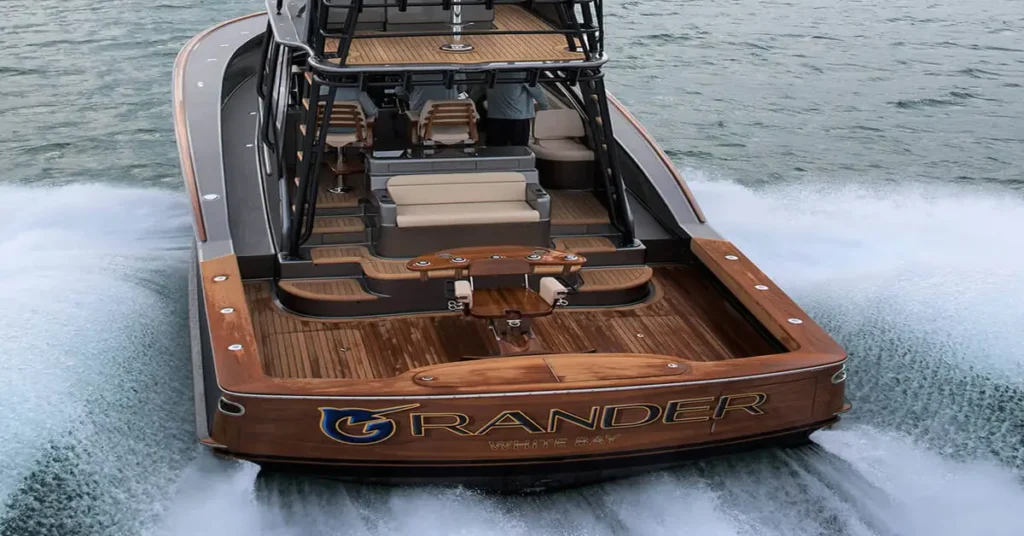Maintaining your inboard boats isn’t just a chore — it’s an adventure ensuring that our trusted vessels remain in peak condition for every voyage. With the thrill of the open water calling to us, the last thing we want is to be sidelined by avoidable mechanical issues.
That’s why inboard boat maintenance is crucial; it’s about being proactive rather than reactive, keeping our beautiful boats running smoothly and our days on the water worry-free. With inboard boats, the upkeep involves a blend of regular checks and routine procedures.
From oil changes after every 50 hours of operation to the careful inspection of propellers and hull integrity, each maintenance task plays a vital role in the vessel’s performance and safety. By staying ahead of maintenance; we don’t just prolong the life of our boats; we amplify the enjoyment each journey brings.
Our commitment to inboard boat maintenance is a testament to our passion for boating. It’s a hands-on way to show our love for the water and to ensure that our maritime escapades are as uninterrupted as the horizon. So, let’s dive into the essentials of inboard boat maintenance, keeping our spirits high and our boating experiences flawless.
Essential Inboard Boat Maintenance Schedule
Keeping our inboard boats in peak condition requires diligence and an understanding of essential maintenance routines. Our boats are a significant investment, and we can protect them through a structured schedule, ensuring years of reliable service and safe boating experiences. Let’s dive into the specifics of our essential maintenance schedule.
Routine Checks and Inspection
- Weekly to Monthly:
- Inspect safety gear: Ensure life vests, fire extinguishers, and flares are on board and in good condition.
- Check for leaks: Regularly inspect the bilge for signs of water ingress.
- Fuel System: Periodically check and replace fuel filters to prevent contaminants from harming the engine.
- Pre- and Post-Use:
- Motor and Battery: Check battery connections and engine oil levels before leaving.
Seasonal Inboard Boat Maintenance
- Spring Start-Up:
- Engine: Change the engine oil and inspect the cooling system.
- Hull: Clean the boat’s hull and apply a fresh coat of antifouling paint as needed.
- Winterizing:
- Protection: Thoroughly clean and dry the boat before covering it.
- Systems: Drain any water from the engine, add antifreeze, and disconnect the battery.
Annual Servicing
- Professional Check-Up:
- At least once a year, have a professional service to inspect the engine and electrical systems.
- Maintenance Records:
- Keeping a detailed log can help track maintenance and service history.
This essential maintenance schedule ensures our inboard boats are always ready for the adventures ahead!
Importance of Engine Care

The engine is the heart of our boating experience when we think about inboard boat maintenance. It demands our full attention with regular check-ups and care, ensuring our time on the water is delightful and safe.
Oil and Filters
Changing engine oil and replacing filters are fundamental to the longevity and efficiency of our boat’s engine. Regular oil change intervals prevent the accumulation of contaminants and the degradation of engine oil, which can lead to increased friction and, ultimately, engine damage. Here’s what we keep an eye on:
- Engine Oil Level: Consistently check and maintain the oil at the recommended level.
- Oil Quality: Change the oil annually or as specified in your engine maintenance manual.
- Filters: Alongside the oil, replacing the old fuel and oil filters is crucial to prevent clogs and impurities from affecting engine performance.
Fuel System Management
Our engine’s fuel system is vital for smooth sailing. Ensuring the fuel is clean, and the system is free from leaks optimizes performance and prevents potential hazards. Key aspects include:
- Fuel Quality: Use the correct fuel type and consider additives to maintain fuel integrity.
- Monitoring Fluid Levels: Regular checks to ensure proper fuel level, avoiding the risks of running low.
- Fuel Filters: Regular replacement of fuel filters safeguards the engine from debris and water that can cause corrosion and damage.
Cooling and Exhaust
A well-maintained cooling system is crucial in preventing our engine from overheating. The impeller and other components should be inspected frequently. The exhaust system, too, plays a role in dispelling heat and requires regular checks to avoid blockages that can cause overheating or back pressure. Here’s our checklist:
- Cooling System: Regular inspection for leaks or worn parts and replacement of the impeller every season or as needed.
- Exhaust: Regular checks for blockages or signs of corrosion that can impede engine function.
- Spark Plugs: Checking and replacing spark plugs is part of ongoing maintenance to ensure efficient engine operation.
Hull and Propulsion System

We know how vital regular onboard boat Maintenance is to keep our vessel sailing smoothly. Below, we’ll dive into the specifics of maintaining the hull and propulsion system with particular attention to critical areas that ensure top-notch performance and longevity.
Keeping the Hull in Top Shape
The hull is our boat’s foundation, so we keep it clean and free from barnacles and marine growth. Here’s our acHere’sist to maintain a pristine hull:
- Inspections: Regularly inspect for any cracks or corrosion. Minor issues can become big problems if they are checked.
- Cleaning: Schedule frequent hull cleanings to minimize drag and maintain fuel efficiency.
Propeller and Shaft Maintenance
Our propeller and shaft are critical for efficient movement through water. Here’s how we them:
- Examine Propeller: Check for corrosion or damage. Even minor dents can impact performance.
- Shaft Care: Inspect the propeller shaft for wear; apply lubricant as recommended.
- Torque Check: Ensure all components are fastened with the proper torque, as loose bolts could spell disaster.
Electrical and Steering Systems

Inboard boat maintenance ensures we get our vessels’ best performance and longevity. Let’s dive into the critical aspects of electrical and steering system care.
Battery Upkeep and Connections
Proper battery maintenance is vital—we rely on our vessel’s batt vessel’s start engines and run accessories. For optimal battery health, we must regularly:
- Inspect battery terminals for corrosion and ensure they’re clean.
- Check the battery’s stability and keep it fully charged when not in use.
A well-maintained battery is crucial for the reliability of a boat’s 12-volboat’s structural system. It’s all about connections and flow, ensuring we always have the power when needed.
Steering System Reliability
- Navigating the waters with confidence means keeping our steering system in top-notch condition. Here’s what wHere’sRegularly inspect steering cables and linkage for wear and proper tension.
- Wash exposed steering components with soapy water and prevent corrosion by applying a corrosion inhibitor.
Keeping on top of steering maintenance, including lubricating moving parts, ensures we can avoid any trouble. Remember, smooth steering is safe steering.
Our Best Tip for Inboard Boat Maintenance

When it’s up to our Opinion, always start with a thorough engine inspection for inboard boat maintenance. Check for wear, loose connections, and damage, particularly on belts, hoses, and electrical components. They are regularly changing the oil. Ideally, every 50 hours of use, or at least once a year, is essential to keep the engine running smoothly and prevent costly repairs.
Pay attention to the importance of flushing the cooling system and checking the integrity of the fuel system. These proactive steps ensure your inboard boat remains reliable and ready for the water.
FAQ – Inboard Boat Maintenance

Maintaining your inboard boats is crucial for both performance and safety. Let’s dive into your most common questions about inboard boat maintenance. If you are more interested in Sailing, check out our article about race sailboats here.
What is the recommended maintenance for an inboard boat?
Regular Maintenance Includes:
Engine Checks: Regularly inspecting the engine for any signs of wear and tear.
Battery Care: Ensure the battery is charged and replace it every 2-5 years, depending on use.
Oil Changes: Frequently changing the engine oil prevents buildup and ensures smooth operation.
Proper Ventilation: Using a mechanical ventilation system for gasoline-powered boats built after 1981, per federal law.
Hull Inspection: Regular checks for any damage or abnormalities in the hull.
System Checks: Regularly inspecting fuel, electrical, and steering systems.
How often should you have your boat maintenance?
Engine and System Check-ups: At the onset of the boating season and every 100 hours of operation.
Annual Check-ups: Boat maintenance should be done at least once a year.
After Use: Basic maintenance, like flushing out the engine, should be done after every outing, especially in saltwater environments.
What should you always do before running an inboard engine?
Inspect: Conduct a thorough check for leaks, damaged wires, or other potential issues.
Ventilate: Always ensure proper ventilation before starting the engine to prevent a buildup of explosive gases.
Check Fluid Levels: Oil and coolant levels must be checked and topped up if necessary.
Embracing a thorough maintenance routine for our inboard boats will keep us happy on the water and prolong the life of our vessels.
In summary, we’ve touched upon critical points related to Inboard Boat Maintenance. Your feedback is important to us, so don’t hesitate to join the conversation in the comments section.



